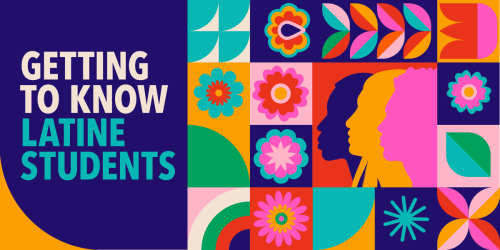The REDO Project: Changing the Culture of Multilingual Education in Idaho

Idaho has faced a shortage of English language development teachers for nearly 20 years. According to the 2018 report Idaho’s Educator Landscape, this shortage impacts “high-poverty” and rural schools more than others. For example, in 2017-18 high-poverty schools had 38 English learner students per teacher, while “low-poverty” schools had only nine such students per teacher.
Claudia Peralta, a professor of literacy, language, and culture at Boise State University, designed the Rural Endorsement Development Opportunities (REDO) Project to address both the English learner teacher shortage and these disparities.
Funded through a National Professional Development grant from the U.S. Department of Education’s Office of English Language Acquisition, REDO awards scholarships to 30 K–12 Idaho teachers each year—totaling $2.2 million for the five-year grant period, 2017–2022. The scholarships allow teachers to participate in online courses at Boise State University that can lead to teaching endorsements in specific English language development areas.
While the REDO project is focused on increasing the supply of rural teachers in Idaho who are trained to teach English to multilingual students, Peralta’s vision goes much deeper. Her ultimate larger goal is to create a new generation of advocates for multilingual and immigrant students and families across Idaho.
Elevating Students’ Linguistic Wealth
Peralta sees REDO as an opportunity for teachers to expand their understanding of community and the role of multilingual education within schools and beyond.
“We want to challenge teachers to think, to create, to reflect, and to examine their own work and their stance on what they believe in,” Peralta says. “Going from a more local to a global sense of community and thinking about what it means to engage in collaboration. How is that going to empower multilingual children, families, the community, and themselves?”
The program is based on translanguaging pedagogy. “That’s the idea that you recognize the linguistic wealth that these students bring,” she says. “This pedagogy says: use that and integrate it into the teaching. Allow the students—encourage the students—to use it. By doing so, they’re going to be more engaged in learning, in general, and also in how to understand and learn English.”
This approach, Peralta says, requires educators to let go of some of the control they may be accustomed to and adopt a facilitator role that embraces multilingual students’ skills and knowledge.
Taking an Additive View of Student Knowledge
“When kids walk into schools,” Peralta says, “many times they have to take off the backpack of their language and their culture and leave it at the door. Because nobody acknowledges or celebrates the fact that they speak another language or that they have a deep, rich understanding of another culture.”Asking students to leave a vital part of themselves behind when they enter the classroom, she says, reflects a subtractive view of their knowledge. REDO, in contrast, encourages an additive view. “There is this repertoire of student knowledge,” she says. “We should use it. We should take advantage of it. And kids will be more engaged because nobody’s telling them not to use what they know.”
Engaging with the Community
The most successful teachers of multilingual students, Peralta says, are eager to continue their own learning. REDO encourages participants to engage with their students’ families and communities as a way of expanding their own knowledge.
Many teachers, Peralta says, do not live in the community in which they teach and do not take the time to connect with it. This impacts their ability to understand and effectively serve the students in their classrooms. To address this, REDO includes both home visits and a “neighborhood walk”: participants walk through the neighborhoods in which their students live, interview community members, and document what they see and hear. For many participants, these experiences are the most powerful part of the program.
“Unless you have this relationship with parents and families, who are the first educators of the students, you’re not going to be successful,” Peralta says. “It’s like having a stool with one-and-a-half legs. You don’t have the other one-and-a-half. So, you’re never in balance.”
Immigrant families, she says, have historically been perceived by some educators as not caring and not willing to engage in their children’s education. “I want to break that cycle,” Peralta says. “It’s been proven in the research, over and over, that immigrant parents care very much about their children—just as much as any parents. And one of the main things that demonstrates that is their very willingness to come to the United States, to make so many sacrifices, because they want their children to have a better life and a better education than they had themselves. And I think teachers need to understand that.”
Assessing the Outcomes
To evaluate the project’s success, Peralta and Boise State University partnered with Education Northwest researchers Mary Martinez-Wenzl and Jason Greenberg Motamedi to gather data from participants and from education leaders in the schools and districts in which the participants teach.
“I think it has been a great partnership,” Peralta says. The evaluators “are both very committed to the goal and the purpose of the program.” This evaluation is critical, because “we have to demonstrate that what the teachers have learned has had an impact on student success,” she says.
The project has indeed proved popular and productive. Each year, REDO gets 75 to 100 applicants for its 30 slots. A total of 113 in-service teachers have completed the program so far, and 75 of those have earned an endorsement in either English as a second language (a term Peralta does not prefer, but that is used by the state) or bilingual instruction. Each scholarship pays for 20–24 credits at Boise State University, as well as for tests, such as Praxis, required for the endorsements. Many participants, Peralta says, go on to earn the additional 12 credits they need for a master’s degree in education with a teaching English to speakers of other languages endorsement.
Education leaders at the schools in which participants teach give REDO high marks—94 percent agreed or strongly agreed that the program is effective in preparing teachers to serve their school’s multilingual population, and the same number agreed or strongly agreed that REDO is effective in increasing teachers’ knowledge and skills relating to parent, family, and community engagement. Meanwhile, 72 percent of the leaders say participating teachers have shared what they learned with colleagues, either formally or informally.
As these findings show, REDO already appears to be having an impact on the Idaho educational system’s ability to support multilingual students and their teachers. “The hope,” Peralta says, “is that they become great teachers who know how to work with English language learners and multilingual learners, how to connect with and support families, and how to become advocates for those students and families. They are gaining skills, knowledge, and insight that they can implement immediately in their school and that they can take with them wherever they go.”



